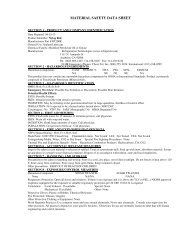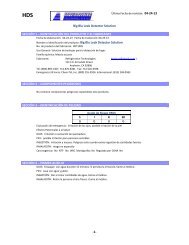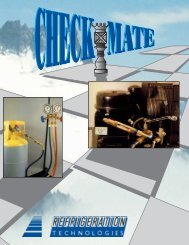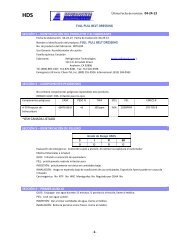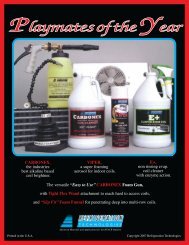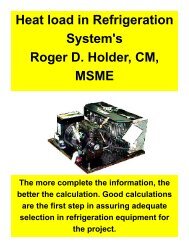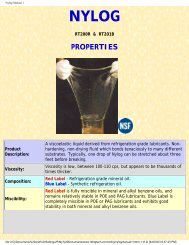Balancing of a Water and Air System (PDF
Balancing of a Water and Air System (PDF
Balancing of a Water and Air System (PDF
You also want an ePaper? Increase the reach of your titles
YUMPU automatically turns print PDFs into web optimized ePapers that Google loves.
55<br />
Differential Pressure Gauges<br />
The differential pressure gauge is used to measure pressure differentials across terminal<br />
heat exchangers <strong>and</strong> flow meters. The manufacturer’s pressure ratings <strong>and</strong> calibration<br />
instructions shall be followed. The instrument calibration verification shall be performed<br />
by comparing the instrument readings with a U-tube manometer <strong>and</strong>/or a calibrated<br />
gauge.<br />
The accuracy <strong>of</strong> the instrument shall be ±1/2 % <strong>of</strong> full-scale differential pressure in<br />
ranges 0-30” wc to 0-200 psi (75 kpa to 1379 kpa). in addition, ±3/4% <strong>of</strong> full-scale<br />
differential pressure for ranges above 200 psi (1379 kpa).<br />
Test Gauges<br />
The most commonly used gauge for measuring pressure in a hydronic system is the<br />
Bourdon tube gauge. The accuracy <strong>of</strong> the gauge shall be 0.5% <strong>of</strong> full scale. The gauge<br />
should be selected so the indicated pressure is between the middle <strong>and</strong> upper half <strong>of</strong> the<br />
scale. When measuring hydronic differential pressures across any device with a Bourdon<br />
tube gauge, the same gauge shall be used for all readings. Pulsations shall be dampened<br />
to stop fluctuations in the readings. The gauge must be located at the same elevation for<br />
all readings to eliminate the effect <strong>of</strong> the weight <strong>of</strong> the fluid in the system at different<br />
heights. The calibration shall be verified by checking against a sheltered gauge prior to<br />
use on every project <strong>and</strong> dead weight tested on six-month intervals.<br />
Non-Intrusive Meters<br />
These meters strap on to the pipe <strong>and</strong> use non-intrusive transducers to measure<br />
acoustical signals <strong>and</strong> determine the flow. The non-intrusive meter may be a fixed meter<br />
or a portable meter.<br />
The transducers must be attached directly to a clean pipe without insulation. The<br />
following must be known regarding the pipe:<br />
• Pipe internal diameter<br />
• Pipe external diameter<br />
• Pipe material<br />
• W Pipe classification<br />
There are two types <strong>of</strong> non-intrusive meters: the Transit Time meter <strong>and</strong> the Doppler<br />
meter.<br />
Transit Time<br />
The Transit Time meter is designed for clean liquid applications <strong>and</strong> is used in HVAC<br />
hydronic flow measurement. The pipe must be free <strong>of</strong> air. The manufacturer’s installation<br />
information must be followed to maintain the meter’s accuracy <strong>of</strong> ±2% <strong>of</strong> full scale.<br />
Doppler<br />
55




